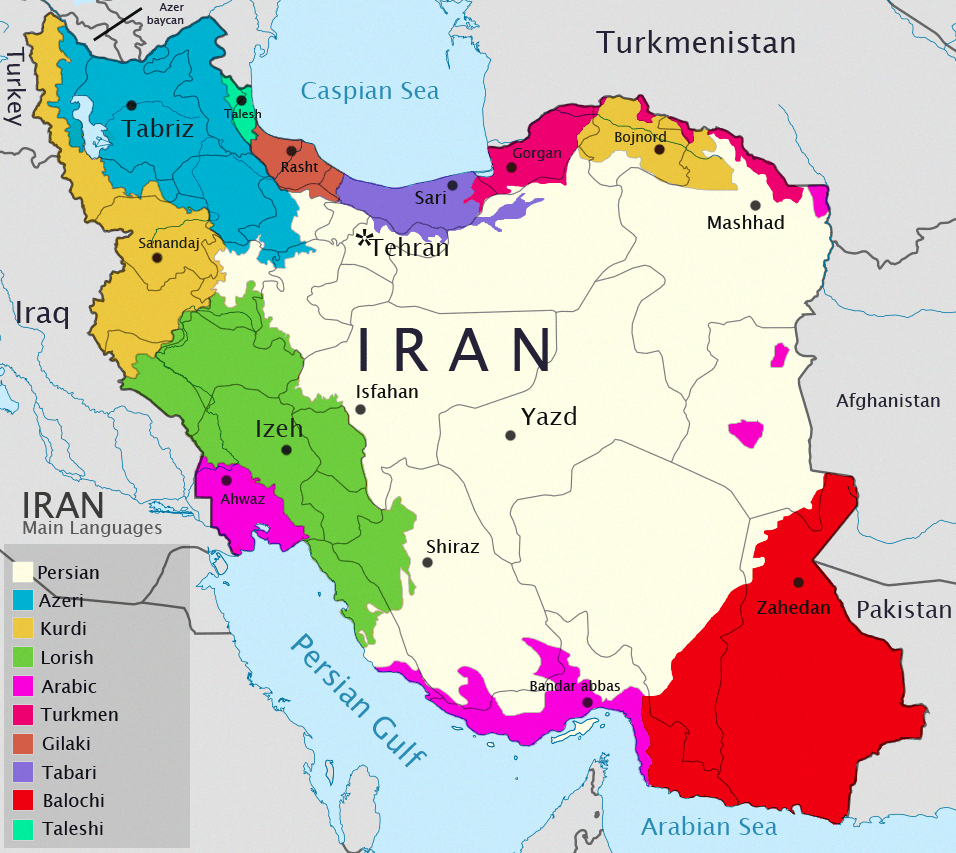Since the Iranian Revolution of 1979, millions of Iranians have migrated to other parts of the Middle East, to the US, Europe, and other areas of the world. The political crackdown following the 2009 election protests has also accelerated the exodus of Iranians. There is no exact number for the Iranian diaspora but most estimates range between 1 and 4 million (some even say 6 million). This map (in French) of the Iranian diaspora shows that many can be found the USA, Canada, India, Middle East (Kuwait, Irak), and Europe (UK, Netherlands, Germany), which is confirmed by the most recent rounds of government census data. The largest concentration is in the US, mainly in California and Southern California, in particular Los Angeles, is commonly referred to a second Iran, or ‘Irangeles’ (Ghorashi, 2009). Canada is not far off and Toronto is affectionately called ‘Tehranto’ by some Iranian-Canadians.

At the same time, what makes Iran’s migration story unique is that it has experienced both emigration and immigration to extreme degrees. This mosaic of diverse ethnic groups is still visible in Iran today, where Persians “only” represent 61% of the population. Other groups include Azerbaijanis (16%), Kurds (10%), Lurs (6%), Arabs (2%), Balochs (2%), Turkmens and Turkic tribes (2%), and others (1%) (source: The CIA World Factbook) Furthermore, it found Persian to be the first language of 53% of the population, followed by Azerbaijani and other Turkic dialect being spoken by 18%, Kurdish by 10%, Gilaki and Mazandarani by 7%, Luri by 6%, Balochi by 2%, Arabic by 2%, and other languages at 2%. This melting pot is a real asset as Iran can be a great test market to reach out to other countries and populations.

As we mentioned before, Iran has a large pool of software and engineering talent that are produced through a filtering educational system. However, the country is unable to absorb these highly talented graduates (unemployment and underemployment are very high) and many decide to leave the country to find work. The Iranian brain drain is one of the biggest in the world: in 2009, the IMF indicated that Iran is losing between 150,000 to 180,000 specialists a year, which is the equivalent to a capital loss of $50 billion.
Despite this sad report on the brain drain, one thing we noticed during the trip is the number of Iranians returning or thinking of returning to the country. With the new government in place, people are hopeful and many feel they want to give back to the new generation — either by mentoring or funding them.
So what can be done? Couldn’t entrepreneurship be a way for Iran to partially stop this brain drain?
If the brightest students from Iran started their own companies, they would inspire a whole generation to stay in the country. Iran should also really take advantage of its diaspora to become a startup nation and encourage more entrepreneurship within the country. An article even suggests using entrepreneurs as cultural ambassadors to ease the relations between the West and Iran.
Entrepreneurship can overcome many obstacles to create, or at least lay the foundation for, economic prosperity and jobs for within Iran, particularly amongst its youth, which we believe will lead to better understanding and relations with the West. The world was built by entrepreneurs, so maybe it can be healed by them.
To test this hypothesis, two successful diasporas we can look at are the Israeli and the Sikh diasporas. A map of the Jewish population below shows the power of such a diaspora.

The Israeli diaspora is famous for its influence in politics, finance and business. Israel has more high-tech start-ups and VCs per capita than any other country in the world and is commonly referred to as “Startup Nation”. A recent success story in Israel is Waze, a navigation app that Google acquired for $1B. The Israeli start-up’s insistence on remaining in Israel rather than moving to US was an important condition to the deal, which shows that Israel managed to develop a strong enough ecosystem that made entrepreneurs want to stay.
Another successful diaspora is the Sikh diaspora. Immigrants are risk-takers and don’t have much to lose, so they’re usually very entrepreneurial.

So what could be done in Iran to emulate the success of these two diasporas?
First, the government should look into investing in programs that would reach out to the diaspora. Israel has been doing this through outreach programs to strengthen the ties between the state and the diaspora (for example, see Aliyah and Birthright Israel programs).
Second, the state should make it easy for the diaspora to fund ventures in Iran. In 2006, a report mentioned that the Iranian diaspora’s combined net worth is $1.3 trillion and the Iran Press Service reported that Iranian expatriates had invested between $200 and $400 billion in the United States, Europe, and China, but almost nothing in Iran. This is a lost opportunity and if the state created incentives for the diaspora to invest in Iran, this could help the ecosystem grow.
Finally, the government should encourage exchange programs, similar to study-abroad programs but for professionals. There are many talented Iranians around the world, so why not send Iranians to learn from their peers and come back home with a new set of skills.
These are just a few suggestions to start with but the list could go on. We can only hope that as the government opens up, similar initiatives will pop up.